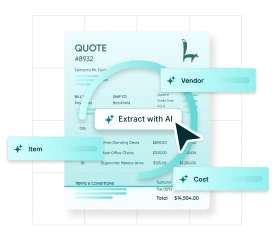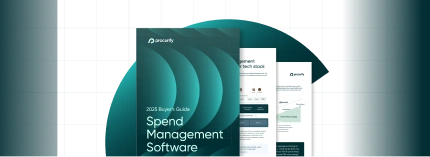From Spend Management to Proactive Purchasing.
Procurify transforms your procurement process from a reactive cost center to a proactive, profit-driving function. Empower your teams to spend responsibly with real-time spend insights and intuitive, collaborative workflows.
Pushing for an Automated Purchasing Process
An organization’s purchasing process is intended to facilitate the official procurement of goods and services. Most companies spend countless hours just managing purchasing and will end up leaking a lot of unnecessary profits because of mismanagement or inefficient processes. Implementing an automated purchasing process starts with understanding the needs, wants and requirements of your organization.
Meeting Demands with an Automated Purchasing Process
Your organization will have demands or requirements that need to be evaluated and, possibly, fulfilled. For example, if you run a cloud procurement software website, one requirement your business might have is to own the domain name and to sign up for hosting. While the process to obtain a domain and a hosting provider is pretty straightforward, there are still a few variables to consider like what do you want your website domain name to be, has it already been taken, are there suitable alternatives, what kind of hosting do you need, etc.
Normally when you have the general details figured out a requisition or order request is sent to your procurement department to handle all the other variables like who you choose to buy from, what is the best option, the most affordable option and what is the time frame to obtain and implement all the purchases. This process is usually done by sending a Request for Proposal (RFP) or Request for Quote (RFP) to various vendors to figure out the different prices and options available in the market. Someone involved with the purchasing process would review all the choices and make a decision based on the given information.
When a decision is made, typically a purchase order is sent out to the chosen supplier. A purchase order helps to move a desired transaction forward by formalizing the terms and conditions and signifying the intent to make a purchase. The supplier would then provide the goods or services and send an invoice detailing what was purchased, the cost and your payment options. A common practice is to use three way matching to verify the invoice to your purchase order and the goods or services received.
Moving to an Automated Purchasing Process
Most procurement processes leave a lot of room for inefficiencies to arise, as well as the potential for missed savings and cash leakage. A lot of organizations cannot be bothered to weed out inefficiencies when it comes to their purchasing but an automated purchasing process can help facilitate the procurement of goods and services by speeding up communication, reducing time for approvals and eliminating some of the unnecessary paperwork.

The requester of a desired good or service will normally not be in constant contact with the purchaser and having a simple, clear and automated purchasing process will help phase out miscommunication and those irritating back and forth messages. While seemingly minor, added together, managing all the little inefficiencies can start to become your full work day. While a truly automated procurement process might never be realized organizations can take small steps to moving towards that ideal.
Making the procurement process more efficient can be as simple as having a standing list of reliable vendors ready to be pulled up, automatically generating purchase orders, or improving communication internally as well as with vendors. Implementing standardized requests when making an expense, travel request or order will help your workforce understand what is expected of them when they are creating a requisition to explain their requirements. This will cut down on incorrect orders, stockouts, over ordering and will significantly make the requisition phase of your procurement process more efficient.
If your organization decides that using purchase orders is a good idea it might be time to start thinking about an efficient way to organize all the purchase orders. Having a system that will keep track of orders and allow people to quickly pull up an order’s information will ensure your company is properly managing it’s spending. An automated purchasing process will help prevent double invoices, missed or late payments fees, and improve your organization’s ability to perform a three way match.
Moving towards an automated purchasing process should do most of the heavy lifting for you. Purchase orders should be managed in a way that they can be pulled up at a moments notice and can be matched with invoices when they come in. Any spending through expense reports or purchase orders should be automatically tracked to make budget management convenient. Tracking spending will allow greater visibility into company spending and provide analytical insight to make more informed decisions.
While having a full automated purchasing process might not be realistic, small actionable steps can be taken to streamline the process.

Preview AI Intake for Orders
Take the product tour to see how the new intake experience works.
